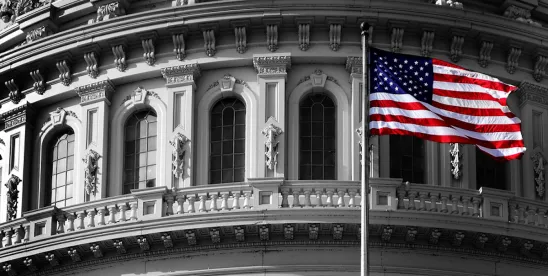“[I]f this unlimited power of removal does exist, it may be made, in the hands of a bold and designing man, of high ambition, and feeble principles, an instrument of the worst oppression, and most vindictive vengeance.”
U.S. Supreme Court Justice Joseph Story, Commentaries on the Constitution (1833)
President Trump has clearly communicated his administration’s belief in presidential supremacy, emphasizing his authority to fire any federal appointee or employee, even those for whom Congress has required “good cause” for discharge. Regarding federal employee whistleblowers, the assertion of these powers wreaked havoc on the laws designed to protect employees who lawfully report waste, fraud, and abuse. President Trump fired both the Special Counsel and a Member of the Merit Systems Protection Board, both of whose jobs were protected under the federal laws that created the positions. More recently, President Trump has threatened to fire the Chairman of the Federal Reserve Board, another appointee whose position is protected under law.
By testing the unitary executive theory in the courts, the debate over the limits of the President’s authority to remove executive officers will soon be decided. The final decisions regarding the President’s removal authority will have a lasting impact on all federal employee whistleblowers, as the legal framework designed to protect these whistleblowers was all premised on the independence of the officials making final determinations in retaliation cases. If these officials are not independent (i.e., are not free from the threat of discharge by a sitting President), one of the most important safeguards included in the whistleblower laws covering federal employees will be compromised.
As the debate over Presidential powers moves through the halls of Congress, the Courts, and ultimately by the voters of the United States, the concerns raised by the Founders of the United States need to be carefully considered. The policy issues they identified years ago continue to resonate today.
The first Founder to comment on the President’s authority to remove officials was Alexander Hamilton. While the States were debating whether to approve the Constitution, Alexander Hamilton directly addressed this issue in Federalist No. 77. Hamilton explained that “the consent of [the Senate] would be necessary to displace as well as to appoint.” Hamilton recognized that the U.S. Constitution required a check and balance on the President’s authority to remove all non-judicial appointees who were confirmed by the Senate.
In other words, the issue was not whether or not the President had the constitutional power to fire appointees, but rather whether the Constitution required Senate approval for any such termination. Hamilton understood that, not only was the President’s power to terminate limited, but he went further and stated that any such termination had to be approved by the body that had originally approved the appointment (i.e., the Senate).
In 1803, a pivotal constitutional law issue arose in the landmark case Marbury v. Madison. The decision was authored by the most respected Supreme Court Justice in history, Chief Justice John Marshall. Justice Marshall explained that the President’s power of removal was controlled by Congress. Congress established the terms of the law establishing the office in question. This reasoning was not just accepted; it was a cornerstone of the unanimous decision, grounded in Congress’s authority to create inferior offices and define the rules governing them. The Constitution explicitly designates these powers not to the President, but to Congress.
In discussing the President’s removal authority, Chief Justice Marshall explained: “Where an officer is removable at the will of the executive, the circumstance which completes his appointment is of no concern…but when the officer is not removable at the will of the executive, the appointment is not revocable, and cannot be annulled.” Thus, if Congress creates a position for which the occupant cannot be fired “at will,” and termination from that position must follow the restrictions placed on it by Congress.
Justice Marshall further explained that a President is barred from simply removing officers at his pleasure if Congress did not grant the President such powers: “[Mr. Marbury] was appointed; and [since] the law creating the office gave the officer a right to hold for five years, [he was] independent of the executive, [and] the appointment was not revocable.”
The most authoritative discussion of the policies underlying the power of a President to remove inferior officers was carefully explained by Supreme Court Justice Joseph Story’s widely respected 1833 Commentaries on the Constitution. In his text, he provides a thorough explication of the history and background of the removal authority and its significance within U.S. Constitutional law. Justice Story explained the polices that strongly weighed against expanding Presidential powers to include a unilateral right to fire federal appointees or employees, if Congress set limits on such removals.
In the Commentaries, Justice Story warned of the catastrophic impact of unrestrained presidential removal powers:
“[I]f this unlimited power of removal does exist, it may be made, in the hands of a bold and designing man, of high ambition, and feeble principles, an instrument of the worst oppression, and most vindictive vengeance.
***
“Even in monarchies, while the councils of state are subject to perpetual fluctuations and changes, the ordinary officers of the government are permitted to remain in the silent possession of their offices, undisturbed by the policy or the passions of the favorites of the court. But in a republic, where freedom of opinion and action are guaranteed by the very first principles of the government, if a successful party may first elevate their candidate to office, and then make him the instrument of their resentments, or their mercenary bargains; if men may be made spies upon the actions of their neighbors, to displace them from office; or if fawning sycophants upon the popular leader of the day may gain his patronage, to the exclusion of worthier and abler men, it is most manifest, that elections will be corrupted at their very source; and those, who seek office will have every motive to delude and deceive the people.
***
[S]uch a prerogative in the executive was in its own nature monarchical and arbitrary; and eminently dangerous to the best interests, as well as the liberties, of the country. It would convert all the officers of the country into the mere tools and creatures of the president. A dependence so servile on one individual would deter men of high and honorable minds from engaging in the public service. And if, contrary to expectation, such men should be brought into office, they would be reduced to the necessity of sacrificing every principle of independence to the will of the chief magistrate, or of exposing themselves to the disgrace of being removed from office, and that, too, at a time when it might no longer be in their power to engage in other pursuits.'
Six years later, in ex parte Hennen (1839), the U.S. Supreme Court unanimously upheld the principle that Congress had the authority to limit the removal authority of the President “by law,” for all appointments that were not “fixed by the Constitution.” Crucially, Hennen held that “the execution of the power [of removal] depends upon the authority of law, and not upon the agent who is to administer it.”
Hennen has never been overturned by the Supreme Court.
The 1903 case Shurtleff v. United States followed Hennen. The Court held that Congress had the authority to limit the removal authority of the President whenever it used “clear and explicit language” to impose such a limitation. Shurtleff has not been overruled by the Supreme Court.
That brings us to the landmark case primarily relied upon by those supporting the imperial powers of the President: Myers v. United States. This case has been mischaracterized as promoting a unitary executive. Far from it. The Court’s 6-3 holding –with distinguished justice Oliver Wendell Holmes Jr. and Louis Brandeis among the dissenters– did not diminish or overturn the precedents established by Hennen or Shurtleff.
The issue at hand was not whether Congress could limit the removal authority of the President. Rather, the case decided a radically different issue: Whether the President needed to obtain the approval of the Senate any time he sought to terminate any official who was confirmed by the Senate. The case concerned an older established doctrine that, because a Senate vote was necessary to confirm certain appointments, a Senate vote should also be needed to remove that official.
The limited scope of the case was clarified by James M. Beck, the Solicitor General of the United States, who argued the case on behalf of the President. His statement to the court was clear: “[I]t is not necessary to decide” the issue of a President’s general removal authority. Further in his argument, after being questioned about the scope of the President’s removal authority, Beck explained that “it is not necessary for me to press the argument [against removal restrictions] that far (i.e., beyond the issue of Senate approval of removal decisions).” In essence, the case of Myers centered on an old argument about Senate interference with executive duties. This issue is fundamentally distinct from the debate today, which focuses on legislative regulations on the President’s ability to fire executive officers.
Justice Brandeis, in his dissent, further elaborated the very narrow nature of the issue decided in Meyers: “We need not determine whether the President, acting alone, may remove high political officers.” Brandeis’ dissent, along with those of Justices Holmes and James Clark McReynolds need to be understood in the context of the Founders’ views on executive power as expressed by Alexander Hamilton (Federalist No. 77), Chief Justice Marshall (Marbury v. Madison), and Justice Story (Commentaries on the Constitution). Justice Brandeis’ explanation of past precedent needs to be given its just weight in the debates that are unfolding today: “In no case has this Court determined that the President’s power of removal is beyond control, limitation, or regulation by Congress.”
Supporters of unrestrained presidential power to fire executive officers often reference the congressional debates on the establishment of the Department of Foreign Affairs in 1789 as their primary justification. However, this reliance again overlooks the historical context of the discussions regarding the president’s authority over foreign affairs.
The congressional vote regarding the removal of an executive officer did not address the constitutional question of whether Congress had the authority to impose restrictions on the president's ability to terminate such officers. Instead, the issue being decided concerned an opposite proposition. The debate was over an amendment that would have stripped the President of the unilateral authority to remove the Secretary of Foreign Affairs. The amendment sought to strip the President of the power to fire the Secretary of Foreign Affairs. The specific clause the amendment sought to strike from the bill was the ability for the secretary “to be removed from the office of the president of the United States.”
The amendment was introduced by Virginia Congressman Alexander White, who had in the prior year participated in the Virginia convention that voted to approve the Constitution. Congressman White was very clear that the purpose of his amendment was not to decide whether or not Congress had the authority to set restrictions on a President’s removal authority. The issue was whether the Constitution prevented the President from having any such authority. Congressman White was simply raising the issue discussed in Federalist No. 77, i.e., whether the authority of the Senate to approve an appointment implied a requirement that the Senate concur in any removal. The issue was not whether the President had imperial powers, but instead was whether the President’s authority to terminate officers should be severely restricted.
Congressman White explained the meaning of his amendment as follows: “As I conceive, the powers of appointing and dismissing to be united in their natures, and a principle that never was called in question in any government, I am adverse to that part of the clause which subjects the secretary of foreign affairs to be removed at the will of the President”.
Although his amendment was not approved, Congressman White’s perspective—that the power of removal should be radically restricted—was supported by many members of the First Congress. But in defeating White’s amendment, the First Congress did not enact any law that would restrict Congress from placing limits on the removal powers of a president. That issue was simply not before the First Congress.
Regardless of the various arguments now being raised concerning the President’s removal authority, the warnings articulated by Justice Story have never been refuted. If the Supreme Court were to conclude that Congress lacked the authority to limit the President’s power to fire, at-will, any and all executive officers, the fear articulated by Justice Story would become the law of the land, and as he warned, would be “eminently dangerous to the best interests, as well as the liberties, of the country”.
- Joseph Story, Commentaries on the Constitution of the United States, § 1533 (1st ed. 1833).
- Compl. Dellinger v. Bessent, No. 1:25-cv-00385 (D.D.C. Feb. 2, 2025) ECF 1, Attachment A.
- Tom Jackman, Federal Judge Rules Trump’s Firing of Merit Board chair was illegal, Wash. Post (Mar. 4, 2025), https://www.washingtonpost.com/dc-md-va/2025/03/04/trump-firing-cathy-harris-mspb-illegal/.
- Colby Smith & Tony Romm, Trump Lashes Out at Fed Chair for Not Cutting Rates, New York Times, (Apr. 17, 2025), https://www.nytimes.com/2025/04/17/business/economy/trump-jerome-powell-fed.html.
- The Federalist, No. 77 (Alexander Hamilton).
- Marbury v. Madison, 5 U.S. 137 (1803).
- See McAllister v. United States, 141 U.S. 174 at 189). (reaffirming the holding of Marbury v. Madison in regard to Presidential Powers 141 U.S. 1704).
- U.S. Const, art. 1, § 8 (“To make all Laws which shall be necessary and proper for carrying into Execution the foregoing Powers, and all other Powers vested by this Constitution in the Government of the United States, or in any Department or Officer thereof.”); art 2 § 2 (“. . .the Congress may by Law vest the Appointment of such inferior Officers, as they think proper, in the President alone . . .”)(emphasis added).
- Marbury v. Madison, 5 U.S. 137, 162 (1803).
- Id. at 161
- Story, supra n 1, § 1533.
- Story, supra n. 1, at § 1533.
- Story, supra n. 1, at § 1533.
- Ex parte Hennen, 38 U.S. 230, 259 (1839).
- Id at 260
- Shurtleff v. United States, 189 U.S. 311, 315 (1903).
- Shurtleff v. United States, 189 U.S. 311, 23 S. Ct. 535 (1903).
- Myers v. United States, 272 U.S. 52 (1926).
- Id at 63.
- Id. at 66.
- Id. at 310.
- Id. at 314.
- Elliot’s Debates, Vol. 4 , p. 350 (June 16, 1789).
- Id.






 />i
/>i

